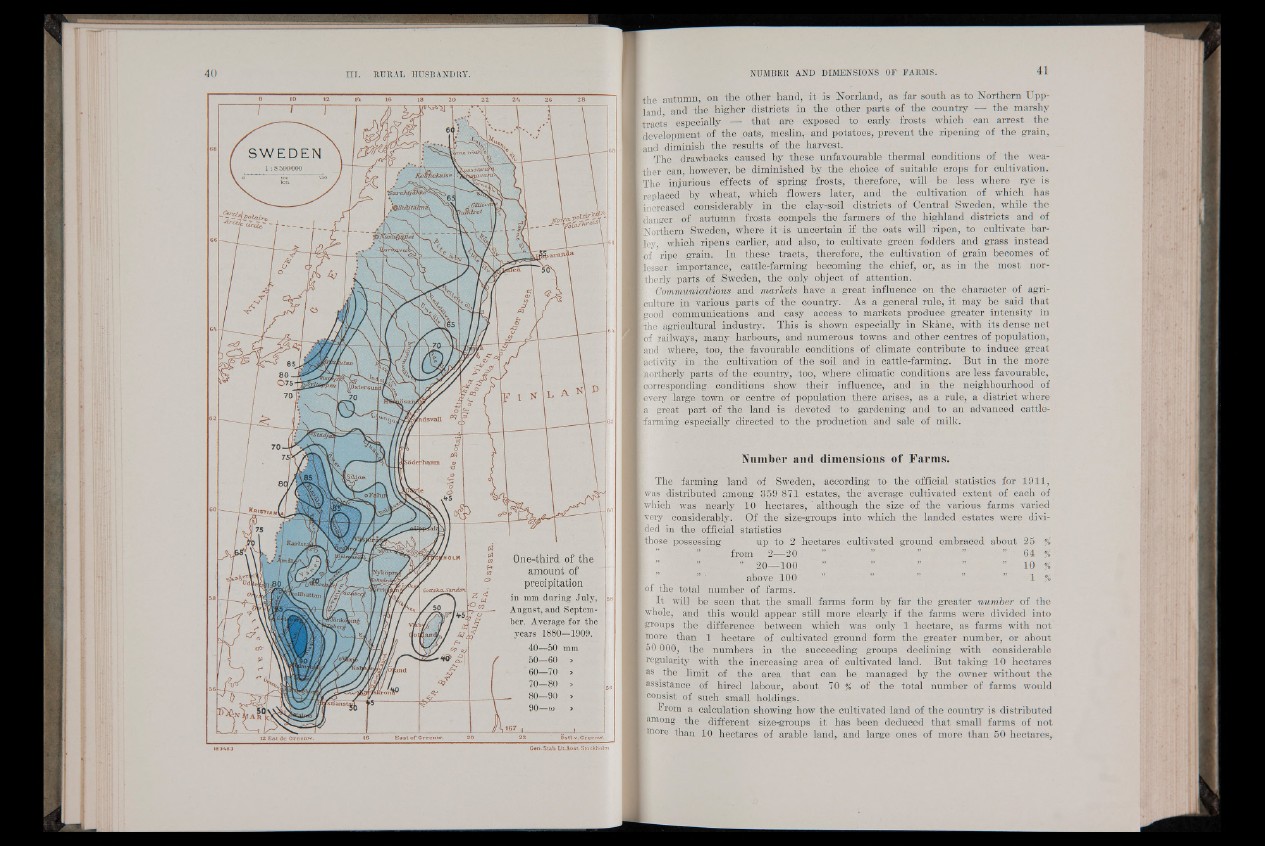
8 10 12 14 16 18 20 22 24 26 28
123 «.83 Cen . Slab . Lit. Ansi. Stockholm
¡the autumn, on the other hand, i t is Non-land, as far south as to Northern Upp-
land and the higher districts in the other parts of the country — the marshy
¡tracts especially — that are exposed to early frosts which can arrest the
¡development of the oats, meslin,-and potatoes, prevent the ripening of the grain,
sand diminish the results of the harvest.
The drawbacks caused by these unfavourable thermal conditions of the weather
can, however, be diminished by the choice of suitable crops for cultivation.
The injurious effects of spring frosts, therefore, will be less where rye is
¡replaced by wheat, which flowers later, and the cultivation of which has
increased considerably in the clay-soil districts of Central Sweden, while the
danger of autumn frosts compels the farmers of the highland districts and of
¡Northern Sweden, where it is uncertain if the oats will ripen, to cultivate barley,
which ripens earlier, and also, to cultivate green fodders and grass instead
of ripe grain. In these tracts, therefore, the cultivation of grain becomes of
lesser importance, cattle-farming becoming the chief, or, as in the most nor-
Itherly parts of Sweden, the only object of attention.
' Communications and markets have a great influence on the character of agri-
¡culture in various parts 'of the country. As a general rule, it may be said that
good communications and easy access to markets produce greater intensity in
¡the agricultural industry. This is shown especially in Skane, with its dense net
[of railways, many harbours, and numerous towns and other centres of population,
[and where, too, the favourable conditions of climate contribute to induce great
[activity in the cultivation of the soil and in cattle-farming. But in the more
¡northerly parts of the country,- too, where climatic conditions are less favourable,
¡corresponding conditions show their influence, and in the neighbourhood of
[every large town or centre of population there arises, as a rule, a district where
ia great part of the land is devoted to gardening and to an advanced cattle-
¡farming especially directed to the production and sale of milk.
Number and dimensions of Farms.
The farming land of Sweden, according to the official statistics for 1911,
'was distributed among 359 871 estates, the' average cultivated extent of each of
¡which was nearly 10 hectares, ' although the size of the various farms varied
very considerably. Of the size-groups into which the landed. estates were divided
in the official statistics
[those possessing up to 2 hectares cultivated ground embraced about 25 %
from 2— 20 . ” ” ” ” ” 64 %
” 20 -100 " ” ” ” ” ” 10 %
above 100 ” ” ” ” ” 1 %
[of the total number of farms.
j It will be seen that the small farms form by far the greater number of the
[whole, and this would appear still more clearly if the farms were divided into
[groups the difference between which was only 1 hectare, as farms with not
[more than 1 hectare of cultivated ground form the greater number, or about
50 000, the numbers in the succeeding groups declining with considerable
[regularity with the increasing area of cultivated land. But taking 10 hectares
[as the limit of the area that can be managed by the owner without the
[assistance of hired labour, about 70 % of the total number of farms would
[consist of such small holdings.
From a calculation showing how the cultivated land of the country is distributed
[among the different size-groups it has been deduced that small farms of not
[more than 10 hectares of arable land, and large ones of more than 50 hectares,